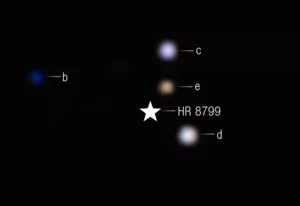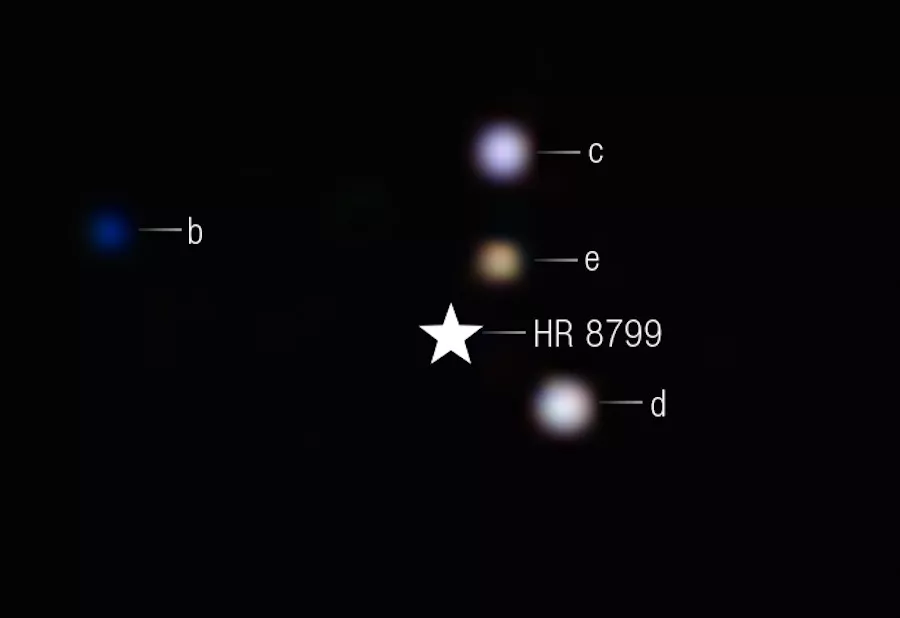Recent observations with the James Webb Space Telescope (JWST) have revealed the presence of significant amounts of carbon dioxide in the atmospheres of four exoplanets orbiting the star HR 8799. This discovery represents the first time CO₂ has been directly detected in extrasolar planets with the telescope.

The HR 8799 system: young and dynamic
The HR 8799 planetary system is located about 130 light years from Earth and is estimated to be about 30 million years old. Because of its young age and special characteristics, it is often studied by astronomers in the context of planet formation. The four known planets in this system are gas giants, with estimated 5-10 Jupiter masses.
The formation mechanisms of gas giants
Gas giants such as Jupiter and Saturn can form in two main ways: the first is core accretion, where the solid core of a planet gradually attracts gas from the protoplanetary disk; the second mechanism is disk instability, in which fragments of the protoplanetary disk rapidly collapse to form massive objects. The new observations suggest that the planets in the HR 8799 system were formed by accretion of the nucleus, which is consistent with the formation model of Jupiter and Saturn.
The importance of JWST observations
The detection of carbon dioxide in the atmospheres of the exoplanets of the HR 8799 system with JWST provides valuable information about their chemical composition and formation processes. These observations confirm that the imaging techniques used by JWST can be effectively used to analyze the chemistry of exoplanets’ atmospheres, complementing traditional spectroscopic methods.
JWST discoveries open up new possibilities in the study of the formation of planets and their atmospheres. Further observations can help understand how common the various formation mechanisms of gas giants are and what factors affect the chemical composition of their atmospheres. Analysis of systems such as HR 8799 also allows us to better understand the processes taking place in our own Solar System.
Sources: Dziennik Naukowy, Astronomy & Astrophysics / fot. NASA, ESA, CSA, STScI, W. Balmer (JHU), L. Pueyo (STScI), M. Perrin (STScI)







